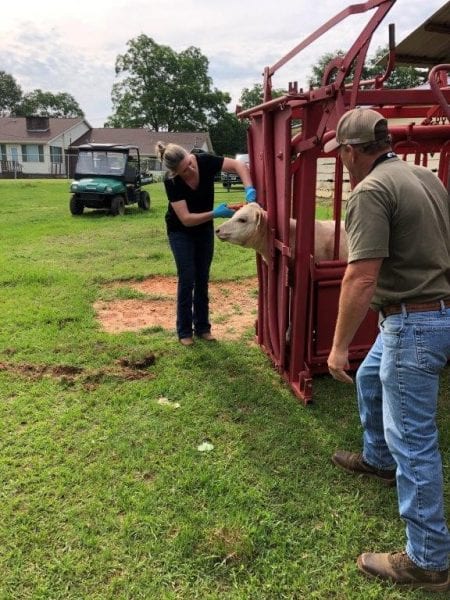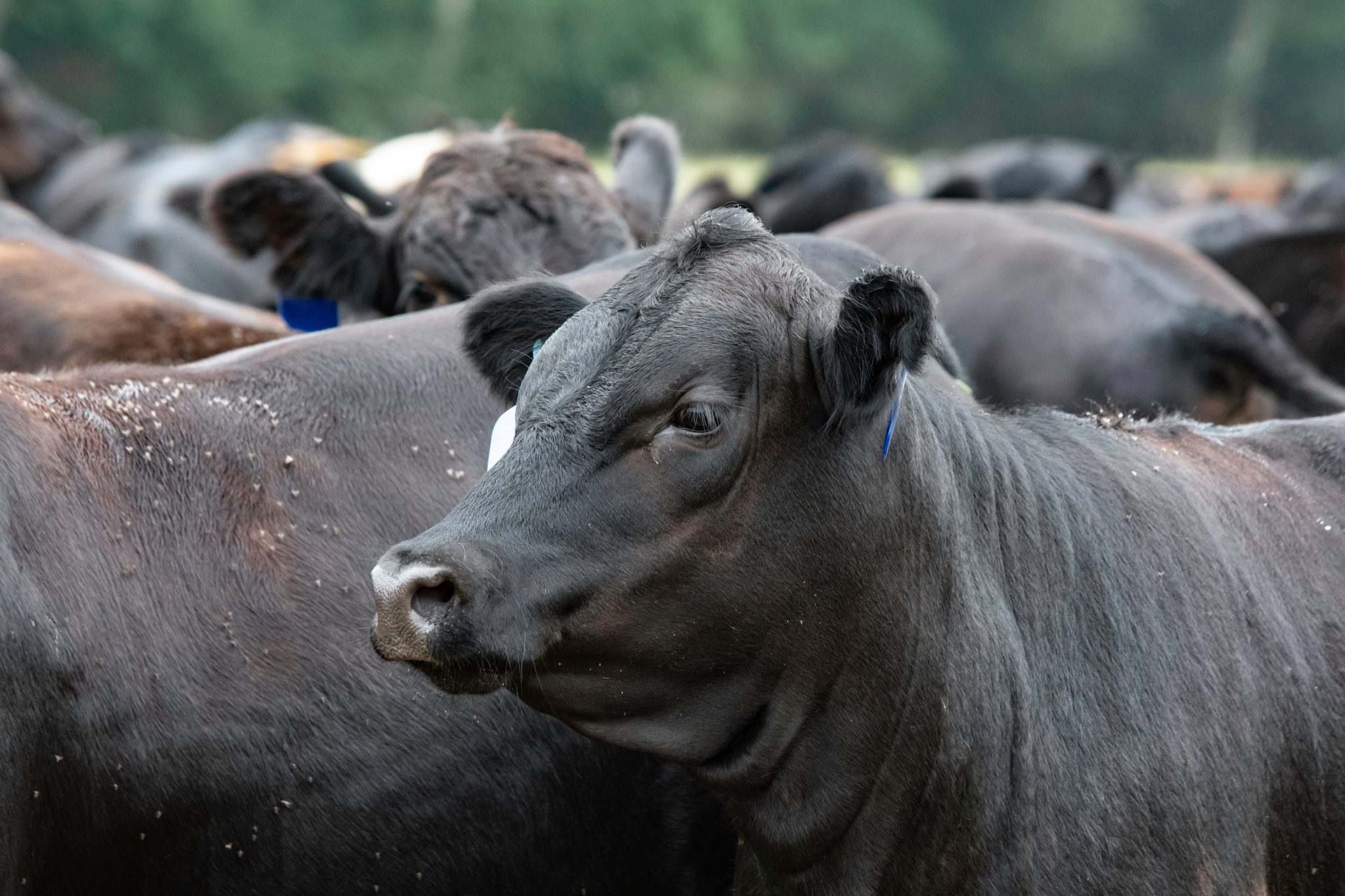Beef

As the seasons change from spring to summer, beef cattle producers will start to take notice of small black clouds following the cattle through the pasture; horn flies. Horn flies are a major economic pest of cattle in Alabama. Research shows that calves can weigh 25 to 50 pounds less at weaning when no horn fly control is used after the economic threshold (200 flies per animal) is reached. Since cattle producers get paid by the pound, losing 25 to 50 pounds per calf can have a huge impact on their pocketbooks.
Control Options
 There are many products labeled for horn fly control, coming in a variety of delivery methods. These include sprays, drenches, dusts, ear tags, and feed throughs. Remember, sprays, drenches, and dusts will provide only temporary relief to cattle and require multiple applications throughout the season. While there are many things that producers can’t control, horn flies aren’t one of them. No matter what method a producer chooses, they must do something so these flies don’t bite off too much of their profits.
There are many products labeled for horn fly control, coming in a variety of delivery methods. These include sprays, drenches, dusts, ear tags, and feed throughs. Remember, sprays, drenches, and dusts will provide only temporary relief to cattle and require multiple applications throughout the season. While there are many things that producers can’t control, horn flies aren’t one of them. No matter what method a producer chooses, they must do something so these flies don’t bite off too much of their profits.
Feed-Through Products
Feed-through products that contain insecticides are available. These feeds pass through the cattle’s digestive system and target the immature horn flies that are developing in the animal’s waste. These are most commonly products that are pre-mixed into loose mineral. Feed-through products require consistent intake to be successful and the herd will still be susceptible to adult horn flies moving in from surrounding herds.
The following tips are important for using feed-through products effectively:
- The use of feed-through products should ideally begin in early spring (March). It takes time for the products to build up in the animal’s waste, so producers want to make sure they start early in the year to get adequate control during peak fly season.
- Make sure a constant supply of the feed-though product is available to the entire herd.
- Feed-though products work best when the herd is isolated from other nearby herds, unless those herds are also using feed-through products. Horn flies don’t mind fences. They will fly from one producer’s herd to another.
Fly Tags
Fly tags have become a widely used method of horn fly control. However, they need to be used correctly to achieve the desired level of control and to avoid resistance development.
The following tips are important for using fly tags effectively:
- Wait to apply tags until the herd has reached 200 flies per animal. Applying tags too early will decrease their effectiveness during the peak of horn fly season.
- Follow the label rates. Most fly tag manufacturers recommend two tags per mature animal. Using a rate lower than what is recommended will not save money, it will increase resistance in the horn fly population.
- Remove fly tags at the end of the season or when they stop being effective. Keeping the fly tags on longer exposes the horn flies to lower insecticide doses, leading to resistance.
- Rotate between classes of insecticide, not brand names of tags, each year. Table 1 shows the different insecticide classes and the brand name product(s) under each class.
Table 1. Fly Tags Products Listed by Insecticide Class
| Organophosphates | Pyrethroids | Macrocyclic Lactone |
|---|---|---|
| Patriot | PYthon | XP 820 |
| Warrior | PYthon Magnum | |
| OPtimizer | GardStar Plus | |
| Dominator | CyLence Ultra | |
| Corathon | Saber Extra |

